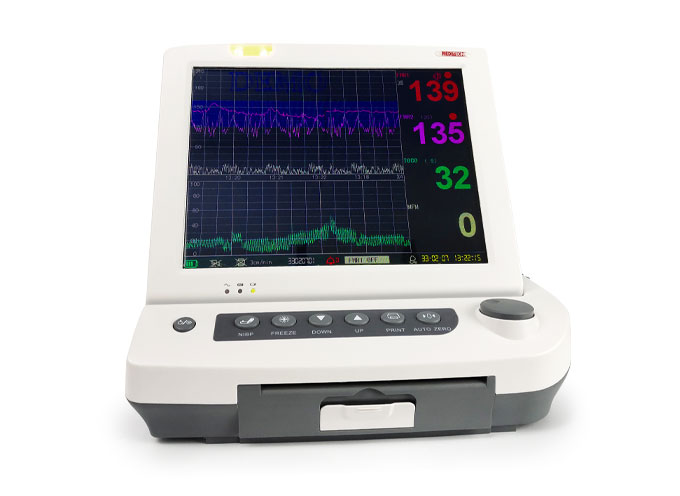

Heart rate during and shortly after contractions: This will give your provider a sense of how your baby is tolerating labor.

"Baseline" heart rate: This is your baby's heart rate between contractions when he's not moving (normal is between 110 and 160 beats per minute).This might happen every 15 to 30 minutes in the active phase of the first stage of labor, and every five to 15 minutes during the second (pushing) stage. The nurse or provider will check your baby's heartbeat at specific intervals. She'll also assess your contractions by laying her hands on your belly. Your provider or labor nurse will hold the handheld Doppler device, external fetal monitor probe or fetoscope against your belly and listen to your baby's heartbeat, just as she did during prenatal visits. How is periodic fetal monitoring (intermittent auscultation) done? Another device that tracks your contractions is usually attached to a second band around your abdomen. This device monitors your baby's heartbeat. What is continuous external electronic fetal monitoring like?Īn electronic device called a transducer that is attached to wide, stretchy bands will be placed around your abdomen. If your pregnancy is low-risk and you go into labor spontaneously, your baby's heart rate may only be monitored intermittently. If you have a high-risk pregnancy or are having your labor induced or augmented with medication, you'll likely be hooked up to an electronic fetal monitor continuously throughout labor. Intermittent monitoring is done with an electronic fetal monitor, a handheld Doppler device, or a fetoscope. Your health provider will check your baby's heart rate either continuously with an electronic fetal monitor, or periodically (this is called intermittent auscultation). a stethoscope-like device called a fetoscope.a handheld Doppler device (like the one your caregiver used to listen to your baby during your prenatal visits), or.


 0 kommentar(er)
0 kommentar(er)
